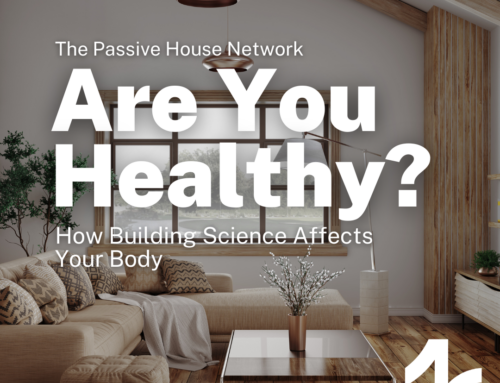The Passive House Institute (PHI) is first and foremost a research institution, with a dynamic staff that is constantly working to improve its algorithms and software tools for modeling, planning, and certifying Passive House buildings and components. PHI’s research translates often into tangible benefits for Passive House practitioners, and a great place to catch up on all of the latest PHI developments is at Passive House 2020: Choose Your Future.
One not-to-miss session for anyone involved in multifamily buildings will be a presentation by PHI’s Elena Reyes Bernal and Melissa Furukawa of Peel Passive House Consulting on PHI’s new supplementary tool to set primary energy renewable (PER) targets in high-density residential buildings.
“The tool is a response to the changing nature of buildings getting certified,” says Reyes Bernal, who led the research effort. An increasing number of large multifamily buildings are being planned in North America, and many of these feature small dwelling units. More units per floor area inevitably translates to more appliances and equipment—and increased electricity use—per floor area. Meeting the fixed PER targets can become very challenging under these circumstances, which is why there has always been a provision in the Passive House criteria for obtaining an exemption—but getting there required a back-and-forth with PHI to arrive at a customized PER target.
Now, thanks to funding from Vancouver, B.C.-based ZEBx that helped support the research needed for the new tool’s development, that customization process has become more automated. The new tool enables a project team to calculate a project-specific PER target that takes into account an allowance for the occupancy density. “You arrive at a revised PER target that is feasible but still quite strict, so as to move ahead emissions reductions from the building sector,” Reyes Bernal states.
“I’ve used the tool a handful of times,” says Furukawa, who notes her office has been consulting on a growing number of high-density multifamily buildings. “It’s really making the process more streamlined,” she concurs.
In addition to simplifying certification, the tool also can be very helpful in the design phase. Using a project’s density and location, a consultant can calculate a rough but robust forecast of the PER target a project would need to achieve. The consultant can then work with the designers to ensure the target is met.
The tool is still in the pilot phase until it is fully verified with additional certified buildings. “So far it is only for Passive House buildings,” says Reyes Bernal, who adds, “We are working on developing it further so it works for EnerPHit and Low Energy Building projects as well.”
Get in on all the details of this and other new tools, tips, and techniques at Passive House 2020: Choose Your Future.




